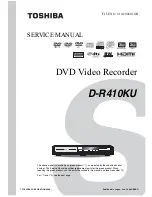
2
C h a p t e r 1
C o n n e c t i n g
Overview
TV used to be simple: no color, no digital video, no stereo sound, no digital audio, no
choices. All you needed was an antenna and a TV. The antenna captured pictures and
sounds. A wire connected the antenna to the TV to transfer pictures and sounds.
As televisions have acquired more features, and new devices have been created to work
with them, it may seem that everything has become more complex. Fortunately, the
fundamentals haven’t changed. You may have a VCR, a DVD player and a game system,
in addition to a satellite dish antenna. However, one thing has remained the same: what
you need to do is get the pictures and sounds from their source (the satellite dish antenna)
to your TV.
You use cables to make a path over which the pictures and sounds travel from your
satellite dish antenna to your TV.
On the back of your equipment you will find several jacks. Some are labeled IN and some
are labeled OUT. The pictures and sound enter a piece of equipment through a cable
connected to an IN jack and leave through a cable connected to an OUT jack.
When you connect your DIRECTV
®
DVR to your television and other audio/video
equipment, you are simply creating a path that starts at the satellite dish antenna and goes
in (through IN jacks) and out (through OUT jacks) of your equipment until it reaches
your TV.
Jacks are places where cables can
be connected.
OUT
IN
Always connect cables from the
OUT jack of one device to the IN
jack of the next. Never connect an IN to an
IN or an OUT to an OUT.
Users_Guide_DTV3.1.book Page 2 Wednesday, June 4, 2003 7:08 PM












































